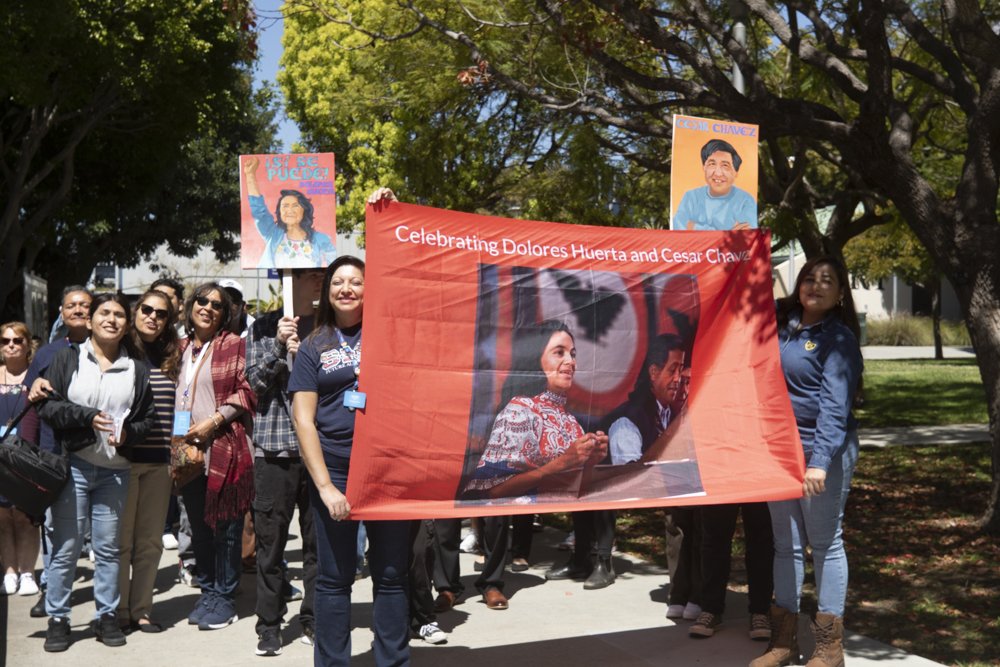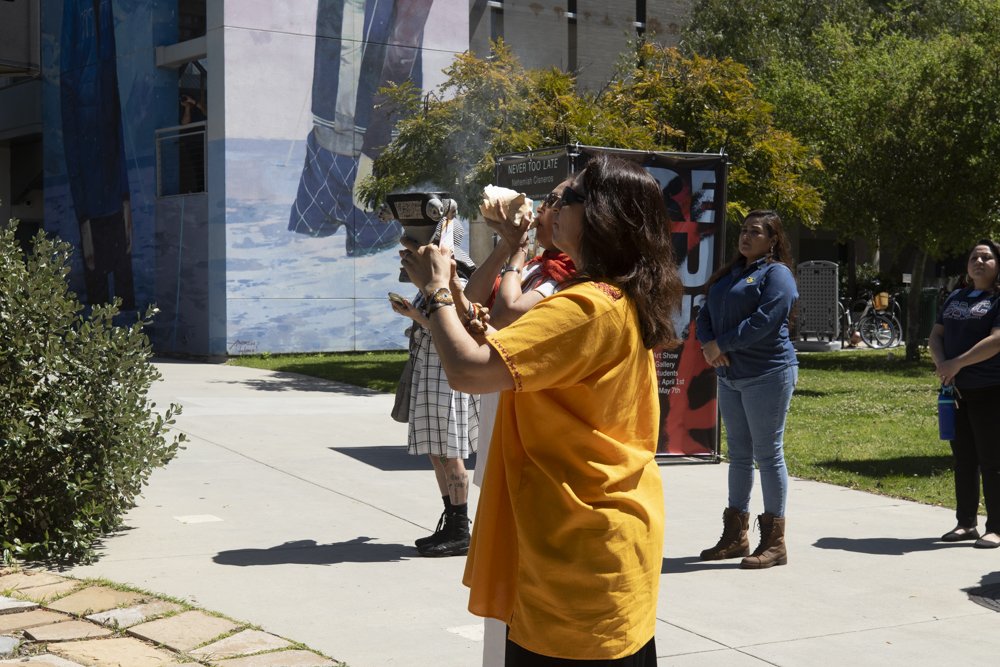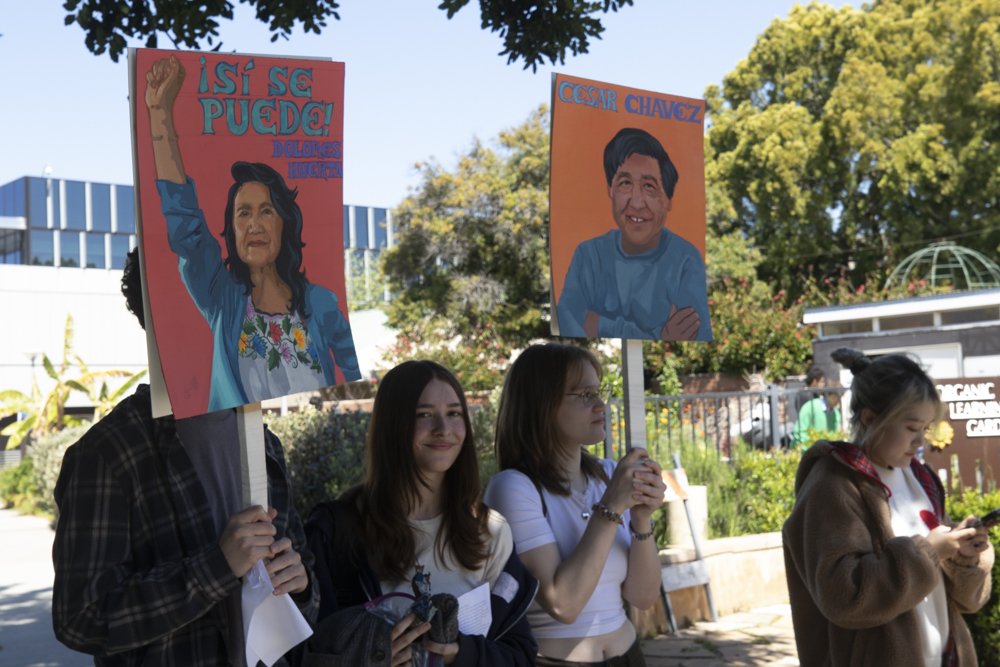Honoring Cesar Chavez and Dolores Huerta



A crowd gathered on top of the grass by the quad fountain on April 3, and from afar, a bright yellow banner that read “Celebrating Cesar Chavez and Dolores Huerta” could be seen. Along with the banner, a painting depicting the two figures, created by Kayla Brunell, an art major at Santa Monica College (SMC), was displayed.
This is the first year that SMC has honored Chavez and Huerta, two prominent figures in the Latinx community. The club event was organized by the Alpha Gamma Sigma club and by Professor John Quevedo, an SMC mathematics professor. The event ended with a procession through the campus to symbolize the marches and strikes used by the unions to win their labor contracts.
The event began with Quevedo discussing the importance of celebrating Chavez and Huerta and then continuing to introduce the guest speakers.
Jorge Flores Raygoza, an SMC alumnus who transferred to UC Berkeley for Ethnic Studies, spoke of the impact Chavez and Huerta made.
“Their work has saved me a seat at the table and allowed my voice to be heard,” said Raygoza, “but I don’t think our work is done yet.”
He explained how socioeconomic, gender and racial inequalities became evident during the pandemic. Raygoza said it is a reminder that inclusive movements are still needed to foster allyship and unity.
SMC student Shanaya Wickremesinghe, majoring in data science and was nominated by The AGS club for this year’s AGS spring convention, also spoke about Chavez and Huerta.
Wickremesinghe, who emigrated from Sri Lanka, admired how the two activists challenged powerful corporations and systemic racism and improved the lives of migrant farm workers. She spoke on how Huerta and Chavez both led a movement to fight for the rights of farm workers, “transforming the struggle for survival into a movement for social change.”
Wickremesinghe also touched on Chavez's controversial history, particularly his opposition to the immigration of undocumented workers at the time. “However, I am glad that as a nation, we have come a long way in supporting and empowering undocumented workers and immigrant workers,” she said.
During the Associated Students Board of Directors meeting on March 25, the AGS club's proposed budget for the Chaves and Huerta event was approved. Still, there was a visible split amongst the votes, with seven voting yes and six voting no.
There is quite a controversy involving Chavez and the United Farm Workers (UFW) regarding immigrant workers. Between 1962 and 1975, the UFW advocated keeping all undocumented workers out of California fields, whether they were breaking strikes or not, according to the Undocumented International Labor and Working-Class History Journal. Between 1975 and 1993, the UFW called upon the border patrol to regulate undocumented field workers who were breaking the strike, but the UFW did not oppose their presence in California or the UFW. After Chavez died in 1993, the policy changed again and, in turn, began advocating for Latino immigrants.
In 1962, both Chavez and Huerta co-founded the National Farm Workers (NFW) Association.
During Huerta’s stay in the NFW, she influenced the national political climate, leading to the passage of the 1975 Agricultural Labor Relations Act. According to The Journal Committed to Social Change, this was the first law that recognized California farmworkers’ right to bargain, providing them with more power to negotiate their salaries, working conditions, and other rights.
Huerta not only mobilized her community to fight against discrimination happening in their schools and communities but also fought against institutionalized racism at the state and national levels.
Both Huerta and Chavez continue to be remembered today for those reasons. The two took it upon themselves to speak up for the community they held close to them and, along the way, taught others that forming allyships is one of the most important tactics in fighting for social change.



